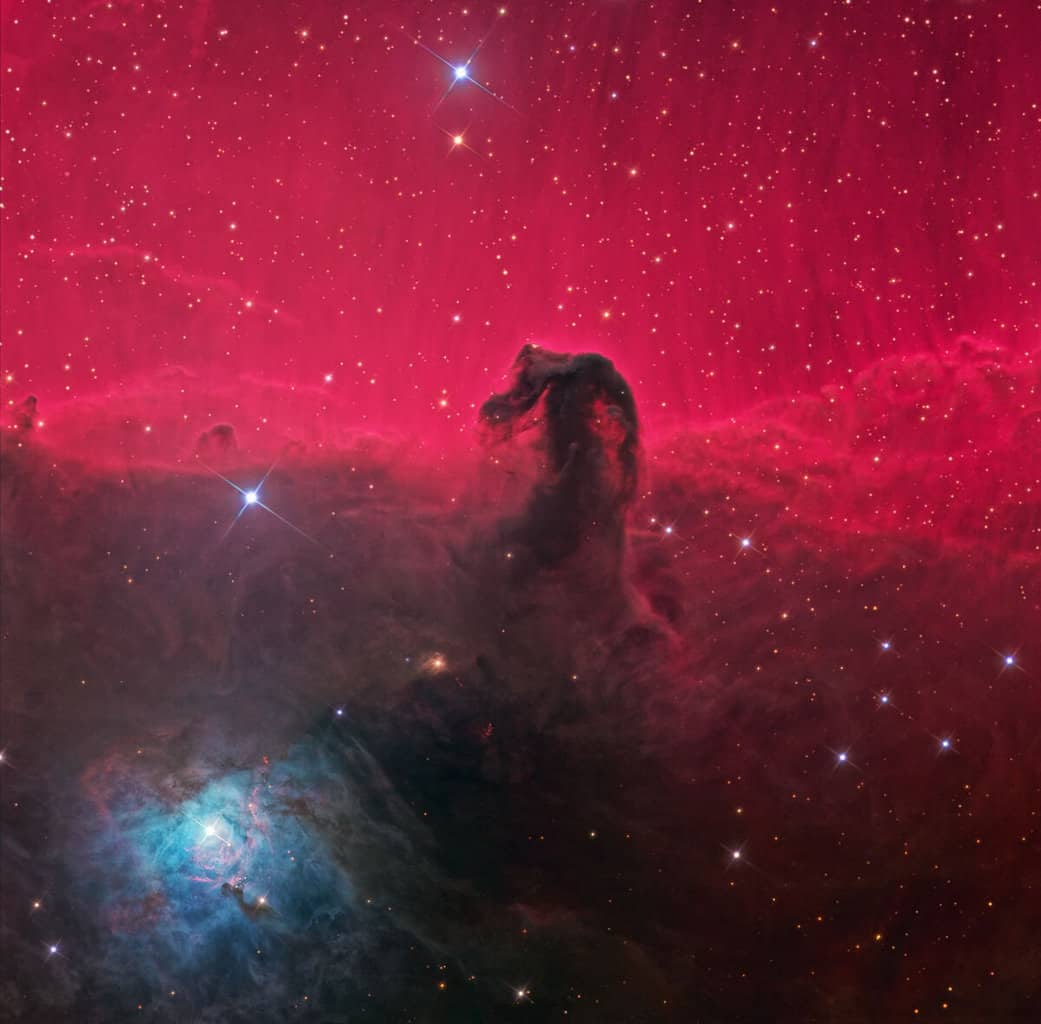Ken Crawford is a leading astrophotographer who has had no less than 40 NASA Astronomy Pictures Of The Day!
In this interview, he takes us through how he took one of his favorite shots – this picture above of the Horsehead Nebula B33.
How Did You Plan the Shots?
The Horsehead Nebula B33 is a classic region of the sky every astrophotographer ends up imaging.
I feel the high-resolution details were groundbreaking for its time, especially in the lower left is the part of the nebula designated as NGC2023.
My observatory (Rancho Del Sol Observatory) was built in 2001 and is my backyard in Camino, CA with pretty dark skies and sometimes very good seeing (low air turbulence).
My observatory is set up to act a bit like a robot as all of my deep-sky images require several nights of exposures through several different filters.
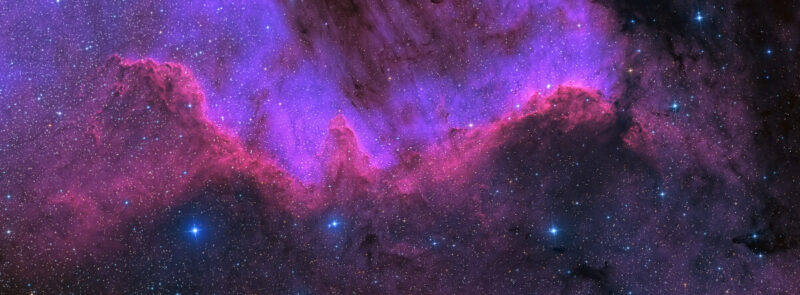
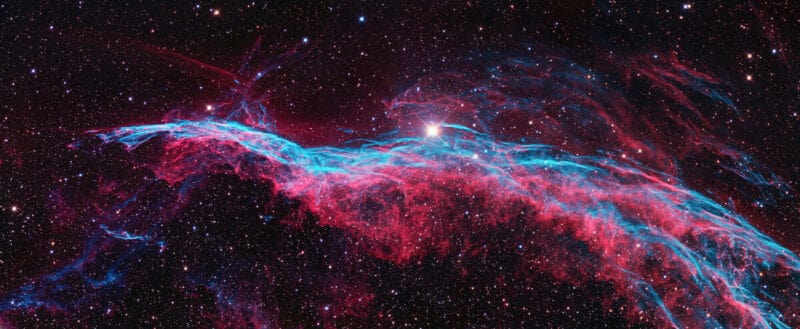
What Equipment Did You Use?
I use a 20” RCOS long focal length high-end telescope.
It is on a robotic Paramount ME mount with a cooled CCD Camera (16803) with a 10 position 50mm filter wheel.
I have filters for Red – Green – Blue – Ha – OIII – SII – Red Continuum – and Luminance AstroDon filters.
See here for a full rundown of the equipment at the observatory.
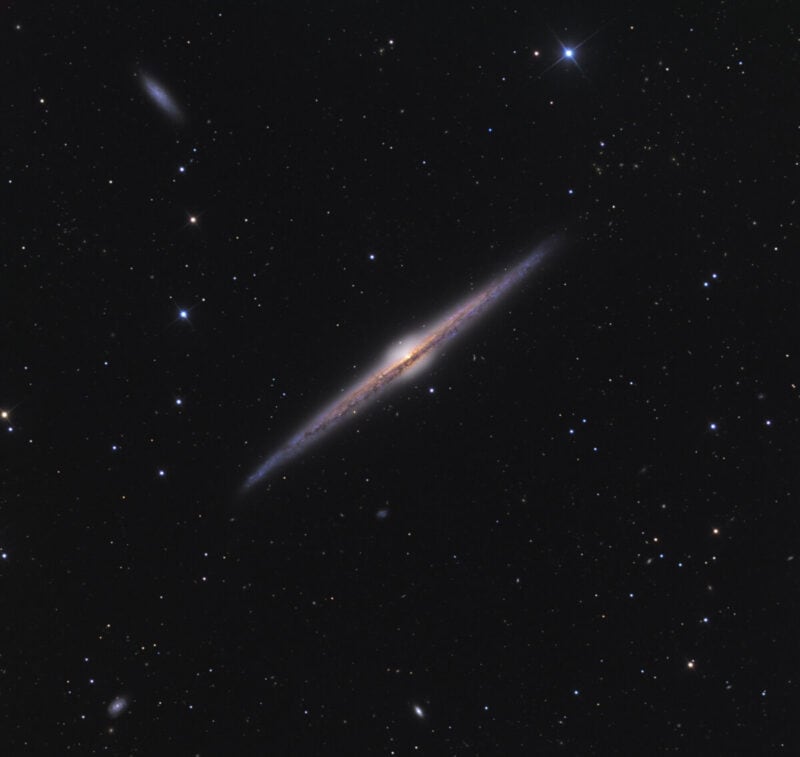
How Did You Compose the Shot?
Exposures are in sub-exposures that are then stacked in software to produce the final data.
The Red – Green – Blue exposures are subs of 20 minutes each. The Horsehead required 90 minutes of exposure for each of these filters.
The narrowband filters are 30-minute subs that produced data from the light of Hydrogen (Ha) of 480 minutes, Double Ionized Oxygen (OIII) of 900 minutes, and Sulfur-II (SII) of 360 minutes combined with 270 minutes of exposure through a clear filter.
The software I use to acquire the data is:
FocusMax automatically focuses on a star and CCDAutopilot realigns the images for each night of exposures.
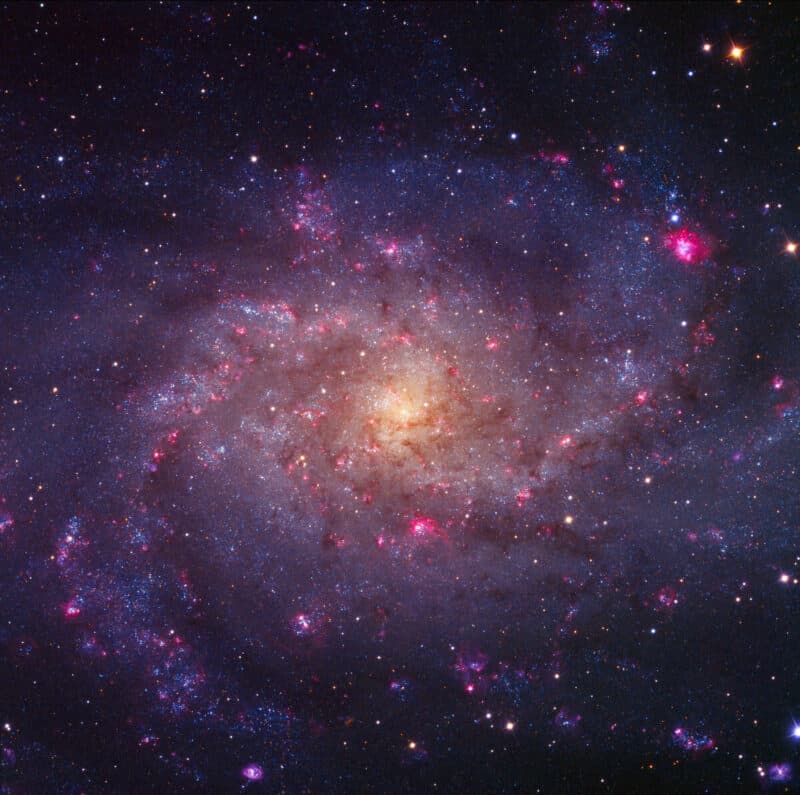
What Post-Processing Did You Do?
Post-production in deep-sky images takes several steps.
First, you have to calibrate each subframe by removing noise and artifacts from the data. Then each subframe is lined up exactly to stack and combine images of each filter into master frames. They are then color-balanced and blended together for the final image.
There are a few steps that are kind of like pre-sets but for one step of an image. This can take me up to 40 hours depending on the amount of data and how picky the astrophotographer is.
I use CCDStack to calibrate and make the master frames – I use PixInsight and Photoshop to produce the final image.
When I started in 2001 there were some very good imagers that came from the film days and I started learning bits and pieces from them. There was one book that Ron Wodaski wrote that gave me my real springboard.
From there I learned from several of the top imagers and I self-taught the rest. Attending imaging conferences was an excellent resource also.
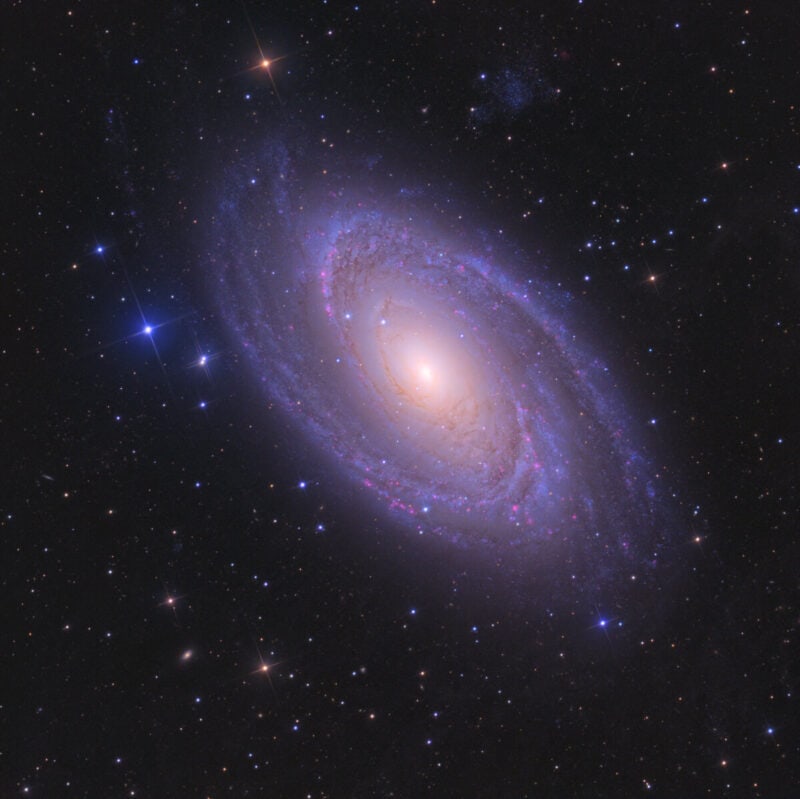
Can You Recommend Any Learning Resources For Other Astrophotographers?
As one of the founders of The Advanced Imaging Conference, I can highly recommend attending that of course! Plus any other imaging conference you can get to.
There are several online image processing tutorials and books by Adam Block, Warren Keller, and others that are a great help.
I find online tutorial videos to be the best way for me as I can follow step by step and rewind if needed. I have a few tutorials on my website also – though they are a few years old now but still have some value.
There are several types of astrophotography methods. I was always interested in high-resolution deep sky imaging but wide field and planetary lunar imaging is popular.
Each type uses different types of equipment which can be expensive. I am at the high end and have about the same invested as a motorhome or a couple of ski boats :). It is a wonderful hobby that is technical and artistic (TechArt).
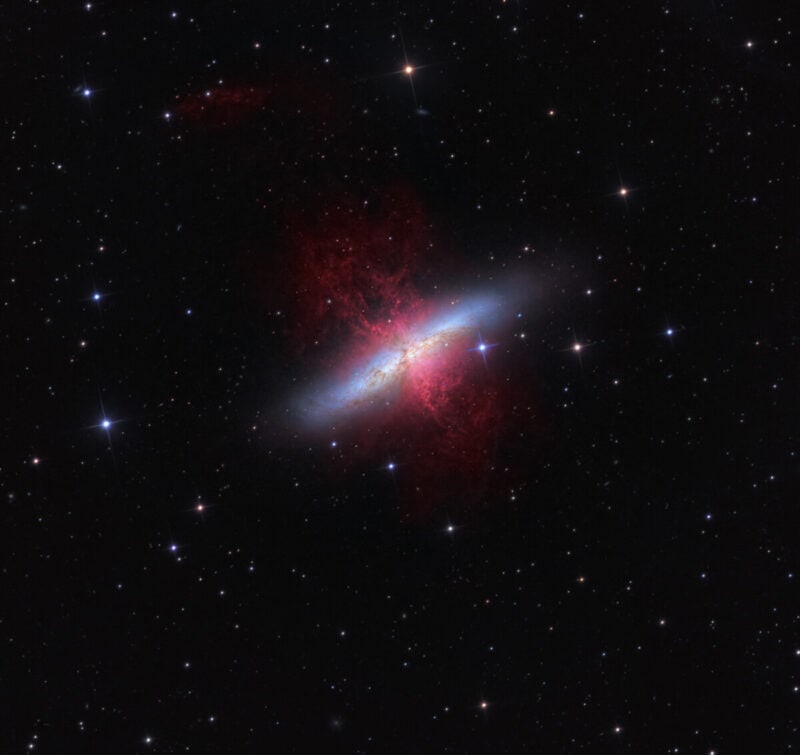
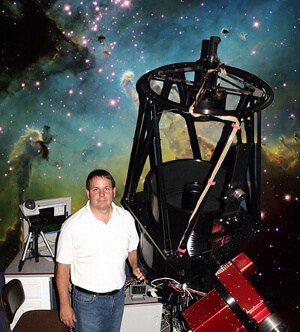
About You – Ken Crawford
My observatory is in the foothills of northern CA in a little town called Camino.
I have pretty much accomplished the astrophotography goals I set out to do so I am not very productive at the moment and am enjoying other hobbies!
The other type of photography I like to do is I have been an RC (drone) pilot for many years and I enjoy building fixed-wing and racing drones as well as drone video work.
I’m proud of the 40 NASA Astronomy Pictures Of The Day (APOD) I’ve had, and my biggest moment was receiving the Hubble Award in 2015.
The accomplishment I am most proud of though is being a founder of the Advanced Imaging Conference (AIC) which became the premier imaging conference in the world.
I have a website imagingdeepsky.com with contact info there as well as a bio if you really want to be bored :).
You can find me on Instagram and I also have pictures and galleries on SmugMug.
(This interview was first published on April 15, 2018)


